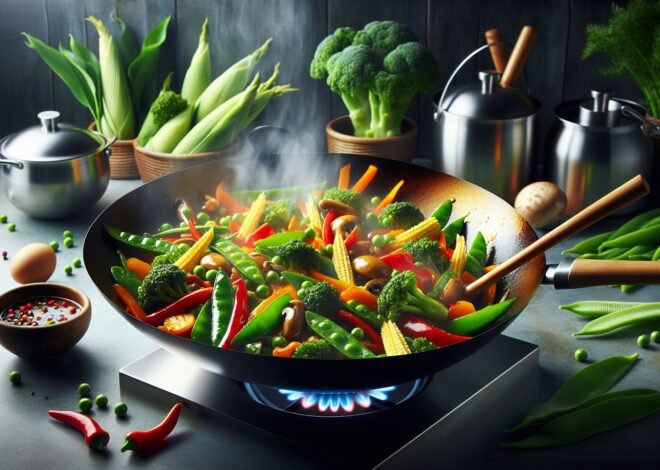
Oven Temperature: A Guide to Accurate Baking
Understanding your oven’s temperature is crucial for accurate baking. Whether you’re a novice or experienced baker, knowing how to measure and adjust your oven’s temperature can make all the difference in the outcome of your baked goods. In this article, we will explore the basics of oven temperature and provide tips on how to ensure your oven is heating correctly.
One of the most reliable ways to check your oven’s temperature is by using an oven thermometer. Place the thermometer inside the oven and preheat it to a specific temperature. Leave it for a few minutes and check the thermometer reading. Compare it to the set temperature to determine any variations. If your oven is not heating to the desired temperature, you may need to adjust the temperature settings or have your oven serviced.
It’s important to note that oven temperature can vary depending on factors such as altitude, humidity, and the type of oven you have. Gas ovens, for example, may have hot spots or uneven heating. Electric ovens may take longer to preheat or cool down. By understanding your oven’s quirks and using the right tools, you can bake with confidence and achieve consistent results.
Fundamentals of Oven Temperature
Understanding Thermostat Calibration
To ensure accurate baking, it is important to understand the calibration of your oven’s thermostat. Thermostat calibration refers to the accuracy of the temperature reading on your oven’s control panel. If the thermostat is not calibrated properly, your oven may not reach the desired temperature, leading to undercooked or overcooked food.
To check the calibration of your oven’s thermostat, you can use an oven thermometer. Place the thermometer in the center of your oven and preheat the oven to a specific temperature, such as 350°F. Once the oven has reached the desired temperature, check the thermometer reading. If the thermometer reading is significantly different from the set temperature, you may need to calibrate your oven’s thermostat.
Factors Affecting Oven Heat Distribution
Another important aspect of oven temperature is heat distribution. Even if your oven is calibrated properly, uneven heat distribution can lead to unevenly cooked food. There are several factors that can affect heat distribution in your oven, including:
- Oven placement: If your oven is not level, heat may not distribute evenly.
- Rack position: The position of your baking dish on the oven rack can affect how evenly the food cooks.
- Oven size: Smaller ovens may have more uneven heat distribution than larger ovens.
- Door seal: A damaged or worn door seal can allow heat to escape, leading to uneven cooking.
To ensure even heat distribution, it is important to follow the recipe’s instructions for rack position and preheating the oven. You can also rotate your baking dish halfway through cooking to promote even cooking. Additionally, regularly checking and replacing your oven’s door seal can help maintain even heat distribution.
Optimizing Baking Through Temperature Control
Preheating: The Essential First Step
Preheating is an essential step in baking that ensures your baked goods are cooked evenly and thoroughly. Preheating your oven allows it to reach the desired temperature before you place your food inside. This ensures that your food is cooked at the correct temperature from the start, resulting in evenly cooked and delicious baked goods.
To preheat your oven, turn it on to the desired temperature and wait for it to reach that temperature before placing your food inside. It is recommended that you preheat your oven for at least 15-20 minutes before baking. This allows the oven to reach the desired temperature and ensures that your baked goods are cooked evenly.
Adjusting Temperature for Different Baked Goods
Different baked goods require different temperatures for optimal baking. For example, cookies and cakes are typically baked at a lower temperature than bread and pizza. It is important to adjust the temperature of your oven based on the type of baked good you are making.
To adjust the temperature of your oven, refer to the recipe you are using and follow the instructions provided. If the recipe does not provide specific instructions for temperature, use the general guidelines for different types of baked goods. For example, cookies and cakes are typically baked at 350°F (176°C) while bread and pizza are baked at higher temperatures ranging from 400°F (204°C) to 450°F (232°C).
Using Oven Thermometers for Accuracy
Oven thermometers are a useful tool for ensuring that your oven is at the correct temperature. They are designed to withstand high temperatures and provide an accurate reading of the temperature inside your oven.
To use an oven thermometer, place it in the center of your oven and preheat your oven to the desired temperature. Once your oven has reached the desired temperature, check the thermometer to ensure that it is reading the correct temperature. If the thermometer is not reading the correct temperature, adjust the temperature of your oven accordingly.
In conclusion, optimizing your baking through temperature control is essential for producing delicious and evenly cooked baked goods. Preheating your oven, adjusting the temperature for different baked goods, and using oven thermometers for accuracy are all important steps in achieving optimal baking results.
Frequently Asked Questions
How can I calibrate my oven to ensure accurate temperature readings?
Calibrating your oven is an important step in ensuring accurate temperature readings. To do this, you will need an oven thermometer. Place the thermometer in the center of your oven and set it to a specific temperature, such as 350°F (175°C). Preheat your oven for at least 15 minutes to ensure it reaches the desired temperature. Once preheated, check the thermometer reading and compare it to the set temperature. If there are any variations, you will need to adjust your oven accordingly. Consult your oven manual for instructions on how to adjust the temperature.
What are the signs that my oven’s temperature is off?
There are several signs that your oven’s temperature may be off. If your food is consistently over or undercooked, this may be a sign that your oven’s temperature is not accurate. Another sign is if your oven takes longer than usual to preheat. If you notice any of these signs, it’s important to check the temperature accuracy of your oven.
How do I use an oven thermometer to check temperature accuracy?
Using an oven thermometer is easy. Place the thermometer in the center of your oven, making sure it’s not touching any walls or the heating element. Turn on your oven and set it to a specific temperature, such as 350°F (175°C). Preheat your oven for at least 15 minutes to ensure it reaches the desired temperature. Once preheated, check the thermometer reading and compare it to the set temperature. If there are any variations, you will need to adjust your oven accordingly.
What is the best way to test my oven’s temperature if I don’t have a thermometer?
If you don’t have an oven thermometer, there are a few ways to test your oven’s temperature. One method is to place a few drops of water on a baking sheet and put it in your oven. Preheat your oven to a specific temperature, such as 350°F (175°C). Once preheated, check the water droplets. If they sizzle and evaporate quickly, your oven is too hot. If they don’t evaporate at all, your oven is too cold. If they evaporate slowly, your oven is at the right temperature.
What temperature should I set my oven to for common types of baking?
The temperature you set your oven to will depend on what you’re baking. For example, cookies are typically baked at 350°F (175°C), while bread is baked at a higher temperature of 400°F (205°C) to 450°F (230°C). Consult your recipe for specific temperature instructions.
How can I adjust baking times if my oven temperature is inconsistent?
If your oven temperature is inconsistent, it’s important to adjust your baking times accordingly. If your oven runs hot, you may need to decrease your baking time. If your oven runs cold, you may need to increase your baking time. Keep an eye on your food while it’s baking and adjust the time as needed.











